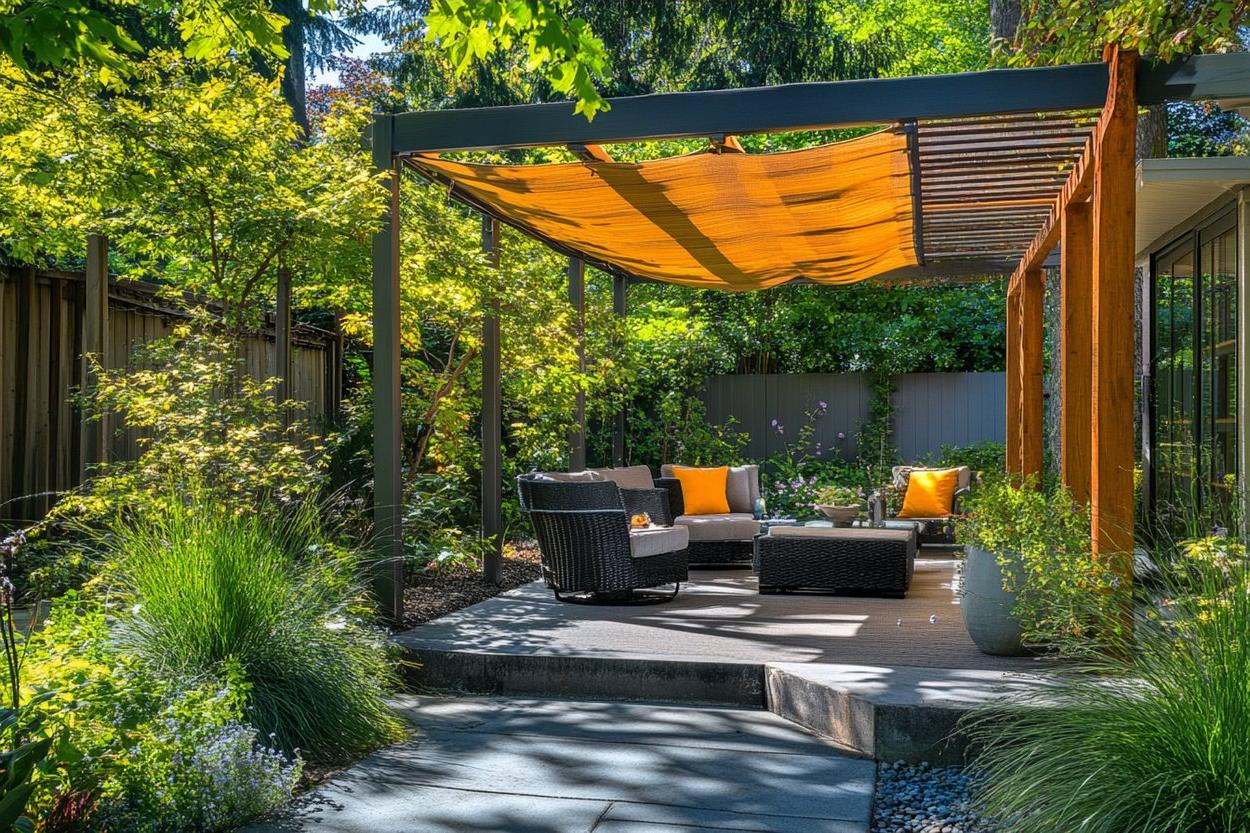What to Know About Portable Patio Enclosures and Easy Outdoor Upgrades
Transforming your outdoor space doesn't always require permanent renovations or costly construction. Portable patio enclosures offer a flexible solution for homeowners and renters alike who want to enhance their outdoor living areas without the commitment or expense of permanent structures. These versatile additions provide protection from the elements while extending the usability of your patio throughout different seasons, all with the benefit of being temporary and often DIY-friendly.

How Portable Patio Enclosures Provide Comfort Without Permanent Installation
Portable patio enclosures represent the perfect middle ground between open-air patios and permanent room additions. Unlike built-in sunrooms or traditional enclosures that require building permits and substantial construction, portable options can be set up or taken down as needed. Most systems use lightweight frames made of aluminum, steel, or reinforced PVC that can be anchored temporarily to your existing patio.
These enclosures typically feature removable panels made from clear vinyl, polycarbonate, or weather-resistant mesh that provide protection while maintaining visibility. The non-permanent nature makes them ideal for renters who can’t make structural changes to their property or homeowners who want seasonal flexibility. During warmer months, you can remove side panels for better airflow while keeping the roof portion for shade, then enclose the space fully when temperatures drop or rain threatens your outdoor plans.
Key Benefits of Choosing Patio Covers for Shade and Convenience
Patio covers form the foundation of many portable enclosure systems, offering immediate benefits even before adding side elements. The primary advantage is protection from harsh sunlight and UV rays, creating a cooler, more comfortable outdoor living space. Modern portable canopies and awnings can block up to 98% of harmful UV radiation while reducing the temperature underneath by 10-15 degrees.
Beyond comfort, these covers extend the lifespan of your outdoor furniture by preventing sun damage and fading. They also provide practical benefits during light rain showers or when dealing with debris from overhanging trees. Many portable options feature retractable designs that allow you to control exactly when and how much coverage you need, rolling out for full protection or retracting when you want to enjoy direct sunlight.
Installation convenience stands out as another significant benefit. Most portable patio covers can be installed in hours rather than days, often requiring just basic tools and minimal DIY experience. This convenience extends to maintenance as well, with many featuring weather-resistant materials that need only occasional cleaning to maintain their appearance and functionality.
What to Consider When Comparing Enclosure Options for Cost, Durability, and Style
When evaluating different portable patio enclosure options, several factors should influence your decision beyond just the initial price tag. Durability varies significantly across price points and materials. Entry-level enclosures with lightweight frames may last 2-3 seasons with proper care, while premium systems with powder-coated aluminum construction can withstand a decade or more of outdoor exposure.
Material choices impact both aesthetics and longevity. Vinyl panels offer excellent transparency but may yellow over time with UV exposure. Polycarbonate panels cost more initially but resist yellowing and provide better insulation. For side curtains and screens, look for marine-grade fabrics that resist mildew and fading, especially if your enclosure will face harsh weather conditions.
Style compatibility with your existing home architecture matters for visual appeal. Some enclosure systems offer customization options like frame color choices, panel designs, and decorative elements that help your addition blend seamlessly with your home’s aesthetic rather than appearing obviously temporary.
Portable Enclosure Types and Their Practical Applications
Different styles of portable enclosures serve varying needs and budgets. Screen enclosures represent the most affordable option, featuring mesh sides that keep insects out while maintaining airflow. These work well in mild climates but offer minimal protection against rain or temperature extremes.
Vinyl and polycarbonate panel systems provide more comprehensive protection, creating three-season rooms that extend your outdoor enjoyment well into spring and fall. These systems typically feature windows that can be opened for ventilation when desired.
For maximum flexibility, consider modular enclosure systems that allow you to add or remove components as needed. These systems might start with just a roof cover but offer expansion options like side panels, doors, and even flooring that can be added incrementally as your needs and budget allow.
Comparing Popular Portable Patio Enclosure Options
When selecting a portable patio enclosure, comparing different manufacturers and models can help you identify the best option for your specific needs. The table below highlights some popular options available in today’s market:
| Enclosure Type | Average Cost Range | Durability | Best For |
|---|---|---|---|
| Retractable Awning Systems | $300-$3,500 | 5-10 years | Shade-only solutions with flexibility |
| Screen Room Kits | $500-$2,000 | 3-7 years | Bug protection with minimal weather protection |
| Vinyl/Polycarbonate Panel Systems | $1,500-$5,000 | 7-15 years | Three-season use with temperature control |
| Pop-up Gazebos | $150-$800 | 1-4 years | Temporary, occasional use |
| Custom Modular Enclosures | $2,000-$7,500 | 10+ years | Maximum customization and durability |
Prices, rates, or cost estimates mentioned in this article are based on the latest available information but may change over time. Independent research is advised before making financial decisions.
Installation and Maintenance Considerations for Maximum Longevity
The ease of installation varies widely among portable enclosure options. Some pop-up canopies require minimal setup, while panel systems might need a weekend and multiple people to complete. Before purchasing, realistically assess your DIY skills and available help. Many manufacturers provide installation videos that can give you a clear sense of the complexity involved.
Proper anchoring is crucial for safety and durability. Even lightweight portable structures need adequate securing against wind. Options range from stake systems for soft ground to weighted bases for concrete patios, with some advanced systems using tension cables for additional stability without permanent fastening.
Regular maintenance significantly extends the life of your enclosure. Develop a seasonal routine that includes checking for loose connections, cleaning panels with appropriate products, and inspecting fabric elements for signs of wear or mildew. Most importantly, follow manufacturer guidelines for winter storage of components if you live in an area with harsh winter conditions or heavy snowfall that could damage the structure.
By carefully considering your specific needs, budget, and local climate conditions, portable patio enclosures can provide an excellent middle ground between completely open outdoor spaces and costly permanent additions, enhancing your outdoor living opportunities without the permanence or expense of traditional construction.




